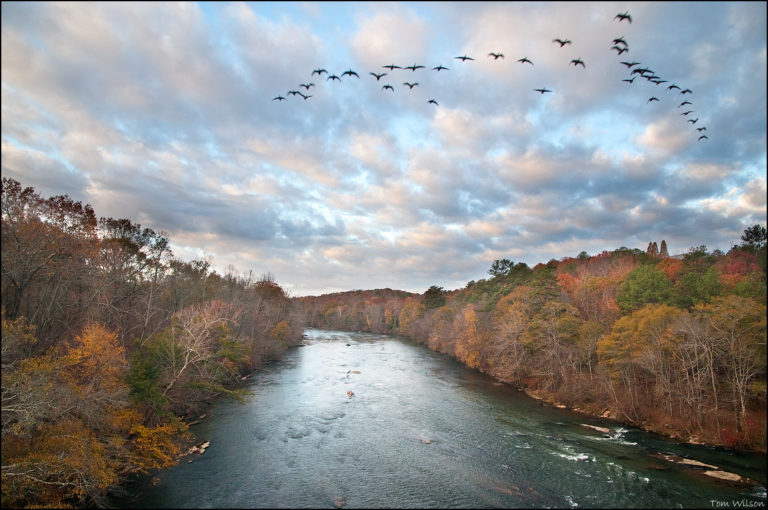15 Pollution-Prevention Victories
By: Ellen Simon

Waterkeepers defend their waterways against every source of pollution, whether it’s toxic arsenic from a mine, oil that’s mixed into stormwater, or feces from cows defecating into a river.
As Waterkeeper Alliance turns 20, we’re celebrating the many ways Waterkeepers around the world prevent and avoid pollution.
These wins require patient, meticulous work. For instance, New York’s Lake George Waterkeeper completed the first watershed-wide assessment of road salt application in North America. The group is now on target to achieve its goal of 50 percent reduction of road salt application in the watershed as early as 2020.
In Australia, the Upper Hunter Waterkeeper, together with agricultural partners and the community, waged a successful 10-year battle to stop the New South Wales government from approving a coal mine license in the upper reaches of the watershed.
If you need a reminder that the good guys can win, here are 15 pollution-prevention examples from local Waterkeepers.
- Middle Huai River Waterkeeper in China helped secure the closure of three chemical companies in Huaihe, helping mitigate the health problems of more than 1,000 villagers. A documentary about the group’s work, “The Warriors of Qiugang,” was nominated for an Oscar.
- Chattahoochee Riverkeeper in 1995 sued the city of Atlanta for polluting the river with dozens of discharges from its combined sewer system each year. The suit was settled in 1997; since then, Atlanta has invested nearly $2 billion in its sewer system. As a result, the Chattahoochee River downstream from Atlanta is cleaner than it has been in decades.
- By mobilizing thousands of citizens, West Virginia Headwaters Waterkeeper helped pass the most protective water protection reforms seen in the state in more than a generation.
- Shenandoah Riverkeeper’s Get the Cattle Out campaign in Virginia has cut the number of cattle herds directly accessing the river by half, resulting in significantly reduced sediment and lower nitrogen and phosphorous levels.
- Colombia’s Bogotá Riverkeeper and partners won a 2012 court decision in the nation’s Supreme Court that forced the government to implement the “Bogota River Recovery Plan,” which includes construction of two big sewage treatment plants, appropriate extension of the sewer system and pumping stations, and construction of a large recreational park alongside the river.
- Pamlico-Tar Riverkeeper’s legal action against North Carolina’s Division of Water Resources successfully overturned Martin Marietta’s mining discharge permit. The planned mining would have transformed Blounts Creek from a swampy, slow-moving headwater habitat into a fast-flowing stream consisting primarily of mine wastewater.
- Black Warrior Riverkeeper organized a diverse coalition of more than a hundred local communities, student groups, businesses, nonprofits, local governments, and churches to successfully encourage Drummond Company and the University of Alabama to abandon a proposal to strip mine for coal on nearly 2,000 acres. The site was directly across from the drinking water intake for 200,000 people in the greater Birmingham area.
- Potomac Riverkeeper’s work on the city of Alexandria, Virginia’s sewer overflows led to legislation mandating sewer upgrades to eliminate combined sewage overflows by 2025. Potomac Riverkeeper convinced Alexandria to go beyond minimum federal requirements and plan to achieve a 96.4 percent reduction of combined sewage and stormwater overflows, eliminating 70 million gallons of sewage and stormwater discharges per year to the Potomac River.
- Mexico’s Loreto Coastkeeper worked with the local municipality to pass an ordinance that strictly limits mining activities — and their toxic impacts to water — in Loreto. The rule is one of only a few such ordinances in the country.
- After Hurricane Matthew, Lower Neuse Riverkeeper worked with legislators and other organizations to ensure renewed funding for North Carolina’s Hog Buyout Program. Under this program, some hog farms within the Neuse River floodplain will be bought out and closed, removing them as a threat to the river.
- California’s San Diego Coastkeeper brought a sewage spill case against the city of San Diego in 2000 that resulted in a settlement requiring more than $1 billion in infrastructure investment, leading to a 90 percent reduction in spills.
- South Carolina’s Congaree Riverkeeper persevered through nearly five years of Clean Water Act litigation, ending a decades-long illegal sewage discharge into the Lower Saluda River.
- Pennsylvania’s Three Rivers Waterkeeper and partners brought a successful legal action to stop the illegal dumping of fracking wastewater into the Monongahela River, part of the region’s drinking water supply. Under the settlement, the city of McKeesport agreed to stop accepting deliveries of Marcellus Shale fracking wastewater at their plant.
- In Florida, St. John’s Riverkeeper’s sanitary sewer overflow suit generated a settlement that created a committee to review all spills and develop corrective action, reducing spills by 50 percent and setting the stage for an aggressive resiliency plan.
- Santa Barbara Channelkeeper won a suit in 2016 against the county of Santa Barbara, Ca., which was discharging polluted runoff from its seven-acre recycling and trash transfer station. The discharge was going into a local creek that provides habitat for endangered steelhead trout and empties into the Pacific Ocean at a highly popular beach. As a result of the settlement, the facility has eliminated its discharge and now diverts all runoff to the sanitary sewer for treatment.
Feature image of the Chattahoochee River by Tom Wilson